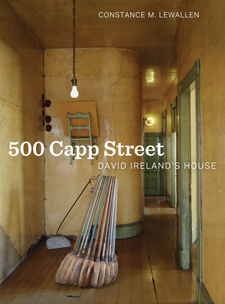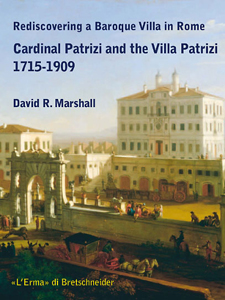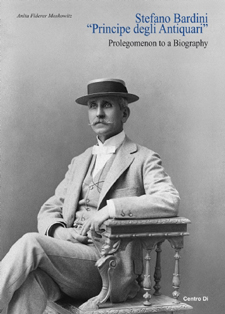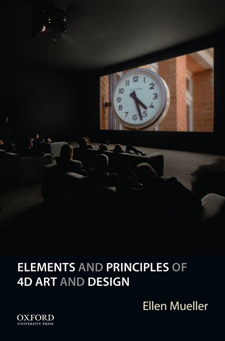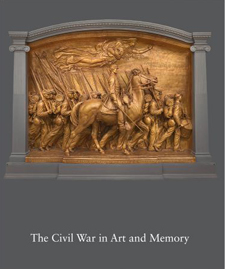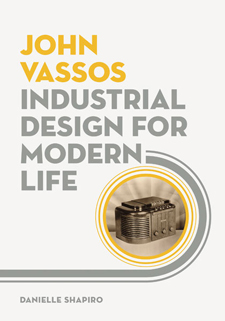CAA News Today
Institutional News
posted by CAA — April 15, 2016
Read about the latest news from institutional members.
Institutional News is published every two months: in February, April, June, August, October, and December. To learn more about submitting a listing, please follow the instructions on the main Member News page.
April 2016
The Frick Collection in New York has partnered with the Ghetto Film School, a Bronx high school for filmmaking, for a new initiative called the Frick Film Project. The project will provide onsite arts education for students across the fine arts and cinematic arts.
The Getty Research Institute in Los Angeles, California, has released the Getty Scholars’ Workplace, a free downloadable tool designed specifically for collaborative humanities research.
The Metropolitan Museum of Art in New York has refreshed and upgraded its website and app. Among the new features is a series of enhancements that create a more intuitive resource and experience for both online browsers and institutional visitors.
The National Gallery of Art in Washington, DC, has received a $30 million challenge grant from the Andrew W. Mellon Foundation. The funds will support digital programs, education, conservation, and the museum’s Center for Advanced Study in the Visual Arts.
The Smithsonian American Art Museum in Washington, DC, has accepted a $375,000 grant from the Andrew W. Mellon Foundation to underwrite the implementation of major objectives in its Linked Open Date Initiative.
The Solomon R. Guggenheim Museum in New York has accepted a $3 million challenge grant from the Andrew W. Mellon Foundation. The funds will endow the position of Carol Stringari, the museum’s deputy director and chief conservator, as well as a new job, the director of engagement, conservation, and collections.
Grants, Awards, and Honors
posted by CAA — April 15, 2016
CAA recognizes its members for their professional achievements, be it a grant, fellowship, residency, book prize, honorary degree, or related award.
Grants, Awards, and Honors is published every two months: in February, April, June, August, October, and December. To learn more about submitting a listing, please follow the instructions on the main Member News page.
April 2016
Bill Arning, director of the Contemporary Art Museum Houston in Texas, has been named a fellow in a new program that supports art writing in underrepresented regions of the country by the Robert Rauschenberg Foundation and Art in America.
Suzanne Preston Blier, Allen Whitehill Clowes Professor of Fine Arts and Professor of African and African American Studies at Harvard University in Cambridge, Massachusetts, has received the 2016 Prose Award for an outstanding book in art history and criticism for Art and Risk in Ancient Yoruba: Ife History, Power, and Identity c. 1300 (New York: Cambridge University Press, 2015).
Vidya Dehejia, Barbara Stoler Miller Professor of Indian and South Asian Art at Columbia University in New York, will deliver the sixty-fifth annual A. W. Mellon Lectures in the Fine Arts at the National Gallery of Art in Washington, DC. Her series of talks, titled “The Thief Who Stole My Heart: The Material Life of Sacred Bronzes in Chola India, c. 850–1280,” will take place between April 3 and May 8, 2016.
Kevin D. Murphy, Andrew W. Mellon Chair in the Humanities and professor and chair of the Department of History of Art at Vanderbilt University in Nashville, Tennessee, has received a $6,500 project grant from the Center for Craft, Creativity, and Design’s Craft Research Fund.
Therese O’Malley, associate dean of the Center for Advanced Study in the Visual Arts at the National Gallery of Art in Washington, DC, has been named a 2016 SAH Fellow by the Society of Architectural Historians.
David M. Stone, professor of art history at the University of Delaware in Newark, has been appointed spring 2016 resident at the American Academy in Rome.
Hélène Valance has won the inaugural American Art in Translation Book Prize, a partnership between the Terra Foundation for American Art and Yale University Press, for her volume Nuits américaines: l’art du nocturne aux États-Unis, 1809–1917 (Paris: Presses du l’université Paris-Sorbonne, 2015).
Jina Valentine, an artist based in Durham, North Carolina, has received a 2016 grant from Creative Capital in the category of emerging fields. Her project, The Black Lunch Table, is a collaboration with Heather Hart, an artist based in Brooklyn, New York.
Exhibitions Curated by CAA Members
posted by CAA — April 15, 2016
Check out details on recent shows organized by CAA members who are also curators.
Exhibitions Curated by CAA Members is published every two months: in February, April, June, August, October, and December. To learn more about submitting a listing, please follow the instructions on the main Member News page.
April 2016
John P. Bowles. Racial Violence and Resilience: Questions and Currents in African American Art. Ackland Art Museum, University of North Carolina, Chapel Hill, January 13–February 21, 2016.
John P. Bowles and Chaitra Powell. Tiny Paintings: Handmade Artist Cards from the Charles Alston Collection. Southern Historical Collection, Wilson Special Collections Library, University of North Carolina, Chapel Hill, February 1–March 21, 2016.
Christine Giviskos. Honoré Daumier and the Art of La Caricature. Zimmerli Art Museum, Rutgers University, New Brunswick, New Jersey, December 19, 2015–July 31, 2016.
Teresa Jaynes. Common Touch: The Art of the Senses in the History of the Blind. Library Company of Philadelphia, Philadelphia, Pennsylvania, April 4–October 21, 2016.
Patricia Eichenbaum Karetzky. Educated Youth: Tang Deshen’s Photographs of the Cultural Revolution. Campus Center, Bard College, Annandale-on-Hudson, New York, April 1–30, 2016.
Ksenia Nouril. Dreamworlds and Catastrophes: Intersections of Art and Science in the Dodge Collection. Zimmerli Art Museum, Rutgers University, New Brunswick, New Jersey, March 12–July 31, 2016.
Rachel Stern. Love 2016. LeRoy Neiman Gallery, Columbia University, New York, January 19–February 17, 2016.
Books Published by CAA Members
posted by CAA — April 15, 2016
Publishing a book is a major milestone for artists and scholars—browse a list of recent titles below.
Books Published by CAA Members appears every two months: in February, April, June, August, October, and December. To learn more about submitting a listing, please follow the instructions on the main Member News page.
April 2016
Constance M. Lewallen. 500 Capp Street: David Ireland’s House (Oakland: University of California Press, 2015).
David R. Marshall. Rediscovering a Baroque Villa in Rome: Cardinal Patrizi and the Villa Patrizi, 1715–1909 (Rome: L’Erma di Bretschneider, 2015).
Anita Fiderer Moskowitz. Stefano Bardini “Principe degli Antiquari”: Prolegomenon to a Biography (Florence: Centro Di, 2015).
Ellen Mueller. Elements and Principles of 4D Art and Design (New York: Oxford University Press, 2016).
Kirk Savage, ed. The Civil War in Art and Memory (Washington, DC: National Gallery of Art, 2016).
Danielle Shapiro. John Vassos: Industrial Design for Modern Life (Minneapolis: University of Minnesota Press, 2016).
Lara Yeager-Crasselt. Michael Sweerts (1618–1664): Shaping the Artist and the Academy in Rome and Brussels (Turnhout, Belgium: Brepols, 2015).
Megan Holmes to Give Annual Italian Art Society/Kress Lecture
posted by CAA — April 14, 2016
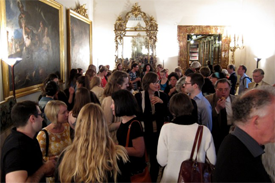 As noted in CAA’s Affiliated Society News for March 2016, the Italian Art Society (IAS) is delighted to announce that Megan Holmes, a professor of art history at the University of Michigan in Ann Arbor, will deliver the seventh annual IAS/Kress Lecture in Florence at Villa I Tatti, the Harvard University Center for Italian Renaissance Studies, on June 1, 2016. Her lecture is titled “New Perspectives on the Reception of Florentine Panel Painting: Interpreting Scratch Marks.” Holmes was the recipient of CAA’s 2015 Charles Rufus Morey Book Award for her volume titled The Miraculous Image in Renaissance Florence (New Haven: Yale University Press, 2013). For more on the lecture, including the abstract, visit the Italian Art Society website.
As noted in CAA’s Affiliated Society News for March 2016, the Italian Art Society (IAS) is delighted to announce that Megan Holmes, a professor of art history at the University of Michigan in Ann Arbor, will deliver the seventh annual IAS/Kress Lecture in Florence at Villa I Tatti, the Harvard University Center for Italian Renaissance Studies, on June 1, 2016. Her lecture is titled “New Perspectives on the Reception of Florentine Panel Painting: Interpreting Scratch Marks.” Holmes was the recipient of CAA’s 2015 Charles Rufus Morey Book Award for her volume titled The Miraculous Image in Renaissance Florence (New Haven: Yale University Press, 2013). For more on the lecture, including the abstract, visit the Italian Art Society website.
The annual IAS/Kress Lecture Series in Italy, inaugurated in 2010 with the generous support of the Samuel H. Kress Foundation, encourages intellectual exchange between North American art historians and the international community of scholars based in Italy. The lectures offer IAS member-speakers the opportunity to engage in productive discussions about their research with a wider range of specialists in the field of Italian art historical studies than is available in the United States; they also create lasting relationships between the IAS and the Italian cultural institutions that host the talks. The lectures are held in late May or early June to accommodate travel to Italy by North American academics and may be given in English or Italian. The IAS provides an honorarium, along with funds to help offset travel expenses, and organizes a reception open to all attendees.
Former IAS/Kress Lecture speakers have reported the many benefits of what one lecturer called a “stimulating experience,” noting how “the lecture really seems to be the sort of international event that many benefit from and that represents what the Kress often endorses.” Another wrote: “Giving the Kress lecture … was a wonderful experience. The event brought together American and Italian scholars and students for a lively exchange. I enjoyed seeing old friends and meeting new colleagues, all in the city whose rich history is our shared passion.”
The IAS/Kress Lectures Series has drawn a wide range of experts from a variety of fields, as well as American graduate students studying in Italy, Italian university students, and many others who have attended and enjoyed the presentations and receptions afterward. Moreover, a number of attendees at these lectures have subsequently joined the IAS, helping to further our mission to promote the study of Italian art and architecture. In keeping with the mission of the Kress Foundation, our speakers have been selected from proposals on subjects ranging from antiquity to the early nineteenth century. Thus far, the IAS/Kress lectures have been on topics ranging from the medieval through early modern periods, and the organization hopes to host lectures on both earlier and later art and architecture in Italy.
If any CAA members or other interested parties are in Florence on June 1, 2016, the IAS encourages attendance at the Villa I Tatti for the seventh annual IAS/Kress Lecture by Megan Holmes! Please do not hesitate to contact the IAS president, Sheryl E. Reiss, with any questions.
Image: IAS/Kress Lecture 2013, Rome, Fondazione Marco Besso (photograph by Olga Posazhennikova)
News from the Art and Academic Worlds
posted by Christopher Howard — April 13, 2016
Each week CAA News publishes summaries of eight articles, published around the web, that CAA members may find interesting and useful in their professional and creative lives.
Wikimedia Art Database Breaks Copyright Law
Sweden’s highest court has found Wikimedia Sweden guilty of violating copyright laws by providing free access to its database of photographs of artworks without the artists’ consent. Wikimedia, part of the nonprofit foundation that oversees Wikipedia, among other online resources, has a database of royalty-free photographs that can be used by the public for educational purposes or the tourism industry. (Read more from Art Daily.)
How Creative Capital Replaced the NEA and Taught Artists to Be Ambitious
Creative Capital is such a big deal in the art world that it even affects the lives of artists who don’t receive its awards. This grant-making organization, based in New York but serving artists nationally, was created in 1999 to counter the economic loss to artists when the NEA killed the majority of its individual artist grants. (Read more from the Stranger.)
How Do I Handle a Backlash against My Art Review?
I wrote a negative review about a show on my blog and received a considerable backlash to it. I eventually took the post down and feel like my entire art scene has blacklisted me. How do I write negative criticism in a small, intimate art community without upsetting everyone? (Read more from Burnaway.)
When Your Art Bleeds You Dry
Art should be ennobling or give us pleasure or, in Picasso’s words, wash “the dust of daily life off our souls.” But sometimes art makes people nervous and worried. Not necessarily because of the content but because it needs to be protected, conserved, and insured—and all those things cost money. (Read more from the New York Observer.)
Art in the New Plutocracy
In 2010, a cadre of muckraking activists started a project called Artigarchy. Its aim was to investigate the relationship between rising inequality and rising art prices, not merely to identify key individuals but to expose institutional relationships, for example, between banks and museums. How do the institutions of the art world shape and actually harm society? (Read more from the Chronicle Review.)
Will the Monograph Experience a Transition to E-Only?
The scholarly literature incorporates a number of different material types. Reference publishing and collections have perhaps been transformed more than any other content type. Why should a database be issued in print format at all? (Read more from the Scholarly Kitchen.)
Does It Count for Tenure?
I am starting a new tenure-track job in the fall. I have a journal article from this past year and another one coming out this spring. Will they count toward my tenure case at the new job? (Read more from Vitae.)
An App That Pushes Aside the Art-World Curtain
The process of buying and selling art has a reputation for opacity, but a new mobile app that promises to instantly provide price data could help open the market. The free app, called Magnus, uses digital-recognition technology similar to that of Shazam, which “hears” music to provide song titles, and Vivino, which reads wine labels and reveals ratings and restaurant markups. (Read more from the New York Times.)
Exclusive Promotion from CAA Membership Partner, frieze!
posted by CAA — April 11, 2016
![frieze keyline[3]](https://www.collegeart.org/news/wp-content//frieze-keyline3-242x300.jpg) frieze offers insightful criticism, beautiful design, and opinion pieces from around the world. Including reviews, interviews, city reports, and worldwide listings alongside features on emerging artists and trends as well as fresh perspectives on more established artists – frieze is essential reading for anyone interested in visual culture.
frieze offers insightful criticism, beautiful design, and opinion pieces from around the world. Including reviews, interviews, city reports, and worldwide listings alongside features on emerging artists and trends as well as fresh perspectives on more established artists – frieze is essential reading for anyone interested in visual culture.
Subscribe now and take advantage of a 10% discount for subscribers to the CAA newsletter. Simply go to shopcc.frieze.com and enter the code CAA16 at checkout.
A year’s subscription (8 issues) includes free delivery to your door and unrestricted access to the current issue and archive on frieze.com – 25 years of frieze!
EXCLUSIVE to CAA members:
College Art Association members can receive a 15% discount on tickets to Frieze New York on Thursday, May 5 or Friday, May 6. To redeem, please log into your CAA account and find the promo code in the Member Benefits section. Tickets must be purchased at frieze.com.
Frieze New York
May 5-8, 2016, Randall’s Island Park
The fair brings together more than 200 of the world’s leading galleries to showcase emerging talents together with the most iconic names in contemporary art. Alongside innovative, curated sections, visitors can also enjoy a celebrated series of talks and site-specific artist commissions.
Art Journal Open Seeks Submissions
posted by CAA — April 11, 2016
Art Journal Open, an open-access, independently edited website, seeks Artists’ Projects and Bookshelf submissions. An agile counterpart to the quarterly Art Journal, the website presents artwork, scholarly essays, conversations and interviews, artifacts of materials and process, and news items. The site serves as a provisional, suggestive, and projective archive for contemporary art. Gloria Sutton of Northeastern University serves as web editor for Art Journal Open, which publishes content on a rolling basis.
Artists’ Projects: We welcome submissions from all artists, ranging from those who work in more traditional mediums to those who have a digital and web-based focus. All formats and projects will be considered. Examples of published artist projects can be viewed on our website. Please send a short proposal describing your project, your website URL or images of your recent work, and your contact information to Gloria Sutton at art.journal.website@collegeart.org.
Bookshelf: Launched last year, Art Journal Open Bookshelf asks a simple question: “What are you reading?” Each answer provides a glimpse into the contributor’s personal reading list, from academic publications and artist monographs to novels, memoirs, and travel guides. Contributors to the series have included academics, artists, curators, and librarians. To submit your own Bookshelf to Art Journal Open, send a brief description of what you’re reading and why, a list of the titles (including author, publisher, and year of publication), and a photograph of your books or reading site to art.journal.website@collegeart.org.
“William Kentridge’s Project for the City of Rome”
posted by Jennifer Griffiths — April 07, 2016
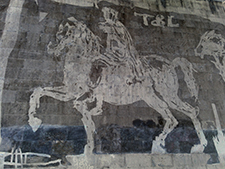
Emperor Marcus Aurelius
Rome’s Tiber embankments have been receiving an eye-catching mural makeover in the past few weeks, as a series of large-scale figures, up to ten meters in height, take shape as a century of pollution and biological patina is slowly power washed from the travertine walls. When William Kentridge’s 550-meter long mural, Triumphs and Laments: A Project for the City of Rome (2016), is complete and inaugurated on April 21, the mythical anniversary of the founding of Rome, it will constitute the South African artist’s largest public work to date.
Occupying the straightest stretch of urban riverfront between Ponte Sisto and Ponte Mazzini, the frieze will decorate a much-neglected space at the heart of the Eternal City. In fact, this reverse graffiti project is part of ongoing cultural programming by the organization Tevereterno, whose goal is to “revitalize Rome’s urban waterfront through the establishment and stewardship of Piazza Tevere, the first public space for contemporary art in Rome.” This international nonprofit initiative and multidisciplinary cultural project partners with the River//Cities Platform to create dialogue with other cities across Europe, America, and Asia about initiatives to develop rivers or waterfronts as cultural spaces. Speaking to a group of volunteers last month, Teverterno’s founder and artistic director Kristin Jones explained, “Everyone comes to Rome to take inspiration from the past, but who is caring for the present?” It was Jones who courted and convinced Kentridge to take on the Rome project.
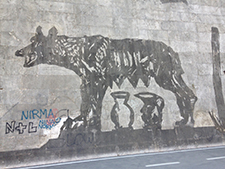
La Lupa Romana sans Romulus and Remus
Since its founding in 2004, Tevereterno has orchestrated a series of artistic happenings along the riverfront, including pieces by Jenny Holzer and Barnaby Evans. Holzer’s Words of Love and War (2007) was a projection of texts by international poets and writers in English and Italian onto a series of Roman monuments, including the Piazza Tevere. WaterFire Roma (2012) by Evans featured thirty bonfires floating on the surface of the river as a conceptual reflection on the struggle between light and dark. As with many of the other events, WaterFire Roma was fashioned after a gesamtkunstwerk, combining visual spectacle with original music by Stag of Marco Guazzone and choreography by Linda Foster.
Kentridge’s drawings of the historical symbols and figures for Triumphs and Laments were first shown at the Italian Pavilion of the Venice Biennale in 2015. Ten workers have been laboring to stencil the eighty silhouettes onto the embankments over the course of the past month. The images evoke both the city’s two thousand-year history and a more universal story of our collective successes and failures as human beings. Even as the name and subject suggest the history of an ancient Roman triumph, or a celebration of victory against Carthage, Britannia, or Parthia along the Sacred Way, Kentridge’s parade of images critically conjures up the specters of conquest and the contradictions of civilization. Just as one nation’s victory demands another’s defeat, one person’s rise often hinges on another’s fall.
Kentridge’s works consistently address issues of social justice by making the personal political and visualizing states of mind, and, in this respect, Triumphs and Laments does not disappoint. Kentridge often returns to themes of estrangement, exile, and transience, all of which are explored in the Rome frieze. Working in a wide range of media, from prints and drawings to theater, tapestry, and sculpture, he is perhaps best known for creating animated films with a palimpsestic process of sketch and erasure. In 9 Drawings for Projection (1989–2003), short films that narrate changing lives in apartheid South Africa, the artist used images of human processions and running water as metaphors for the passage of time. While there are meanings inherent to each individual silhouette along the river, the larger elements of process and iconography resonate with the artist’s other works and add another layer of meaning to his “projection” onto the Tiber walls.
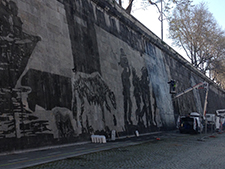
At work along the Tiber embankments
The fate of Kentridge’s frieze is to fade, like all things, under the patina of time, as the Tiber tides rise and fall year by year. This work, like the artist’s films, echoes the palimpsest that has been built, unbuilt, and rebuilt on the banks of the river over the centuries. Yet while the name and image of Rome resound through layers of history, this waterfront spectacle draws attention to the city’s cosmopolitan and contemporary art scene. What is truly lamentable is how the municipal administration of Rome frustrated and delayed such an innovative, creative contribution to the cityscape for so long; it took three years simply to obtain the necessary authorization.
In the run-up to the inauguration, Kentridge is in the city, hosted by the American Academy in Rome, inspecting the riverside work underway and giving a number of talks. He will be in conversation with Carolyn Christov-Bakargiev at the British School at Rome on April 15. Triumphs and Laments will play out as a kind of total work of art at the opening, which will premiere a theatrical program created in collaboration with the composer Philip Miller, and feature live shadow play and two processional brass bands.
News from the Art and Academic Worlds
posted by Christopher Howard — April 06, 2016
Each week CAA News publishes summaries of eight articles, published around the web, that CAA members may find interesting and useful in their professional and creative lives.
The Resurgence of Women-Only Art Shows
While some artists are ambivalent about being viewed through the lens of gender, the all-women’s group exhibition, which fell out of favor in the 1980s and 1990s, is flourishing again. At least a dozen galleries and museums across the United States are featuring women-themed surveys, a surge curators and dealers say is shining a light on neglected artists, resuscitating some careers, and raising the commercial potential of others. (Read more from the New York Times.)
Help Desk: Why Your Show Wasn’t Reviewed
None of my shows has ever been reviewed, even though I’ve exhibited my work in solo and group shows for almost six years. Press releases, personal emails, and newsletters have been sent from me and from the galleries. The galleries aren’t blue-chip, but they’re decent, and there’s an audience. Why can’t I get a review? (Read more from Daily Serving.)
How Critical Thinking Sabotages Painting
Critical thinking benefits disciplines based in words, and I use it myself when teaching modern art history and humanities seminars. But it’s a disaster when used to teach painting, whether to college art majors who want to become painters, to students who want to go into neighboring fields like graphic design or photography, or to biology students who decide to give painting a try. (Read more from Two Coats of Paint.)
We Need Ethnographic Museums Today—Whatever You Think of Their History
Since the 1970s ethnographic museums, perceived as warehouses of colonial loot, were charged with divesting non-Western works of the significance they once carried, in the heat and dust of ceremony, in the movement of dance or oratory, on the bodies of their former owners, in the flow of life. Among commentators and curators, there was much argument regarding approaches to display. (Read more from Apollo.)
Grade Inflation, Higher and Higher
The first major update in seven years of a database on grade inflation has found that grades continue to rise and that A is the most common grade earned at all kinds of colleges. Since the last significant release of the survey, faculty members at Princeton University and Wellesley College, among other institutions, have debated ways to limit grade inflation, despite criticism from some students who welcome the high averages. (Read more from Inside Higher Ed.)
Revising the Terrible, Horrible, No Good, Very Bad Dissertation
Like many graduate students, I wrote a terrible, horrible, no good, very bad dissertation, so revising it into a book has been something of a challenge. I’ve worked through it in two different ways. First, I’ve changed my writing and editing habits for what feels like the hundredth time. Second, I’ve adopted a strategy of recasting my chapters as journal articles. (Read more from the Chronicle of Higher Education.)
How Readers Discover Content in Scholarly Publications
Some survey findings make good sense and deserve attention on their own merits. Perhaps the most significant of these—which is a theme explored across the report—is that discovery patterns and practices vary across different sectors such as academic, corporate, and medical; different countries and levels of national income; and different fields and disciplines. (Read more from the Scholarly Kitchen.)
Getting Down to Brass Taxes: An Interview with Tax Expert Rus Garofolo
Tax day is fast approaching—what’s a freelance artist or burgeoning arts organization to do? In anticipation of the IRS’s upcoming deadline, Amanda Keating sat down with Rus Garofolo, founder of Brass Taxes, to discuss some key questions that arts organizations might want to consider in their tax prep. (Read more from Fractured Atlas.)







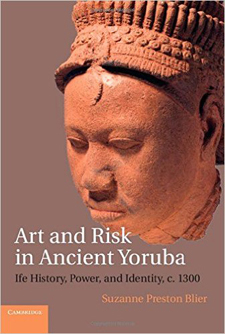

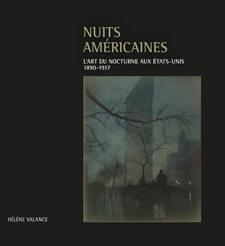

 Installation view of Racial Violence and Resilience: Questions and Currents in African American Art (photograph provided by the Ackland Art Museum)
Installation view of Racial Violence and Resilience: Questions and Currents in African American Art (photograph provided by the Ackland Art Museum)
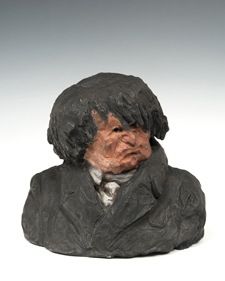 Honoré Daumier, Clément-François-Victor-Gabriel Prunelle, 1832–35 (cast 1927–37), painted terracotta. Museum Purchase in honor of Barbara Voorhees (photograph by Peter Jacobs)
Honoré Daumier, Clément-François-Victor-Gabriel Prunelle, 1832–35 (cast 1927–37), painted terracotta. Museum Purchase in honor of Barbara Voorhees (photograph by Peter Jacobs)
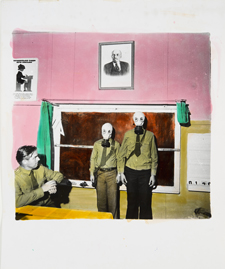 Boris Mikhailov, From the series the Sots Art, 1975–90, gelatin-silver print handcolored with aniline dyes. Collection Zimmerli Art Museum at Rutgers, Norton and Nancy Dodge Collection of Nonconformist Art from the Soviet Union (photograph by Peter Jacobs 2014 and © 2015 Artists Rights Society [ARS], New York / VG Bild-Kunst, Bonn)
Boris Mikhailov, From the series the Sots Art, 1975–90, gelatin-silver print handcolored with aniline dyes. Collection Zimmerli Art Museum at Rutgers, Norton and Nancy Dodge Collection of Nonconformist Art from the Soviet Union (photograph by Peter Jacobs 2014 and © 2015 Artists Rights Society [ARS], New York / VG Bild-Kunst, Bonn)
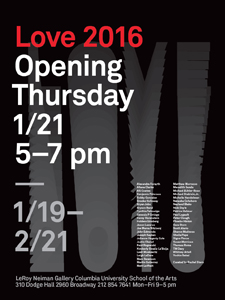 Invitation card for Love 2016
Invitation card for Love 2016
